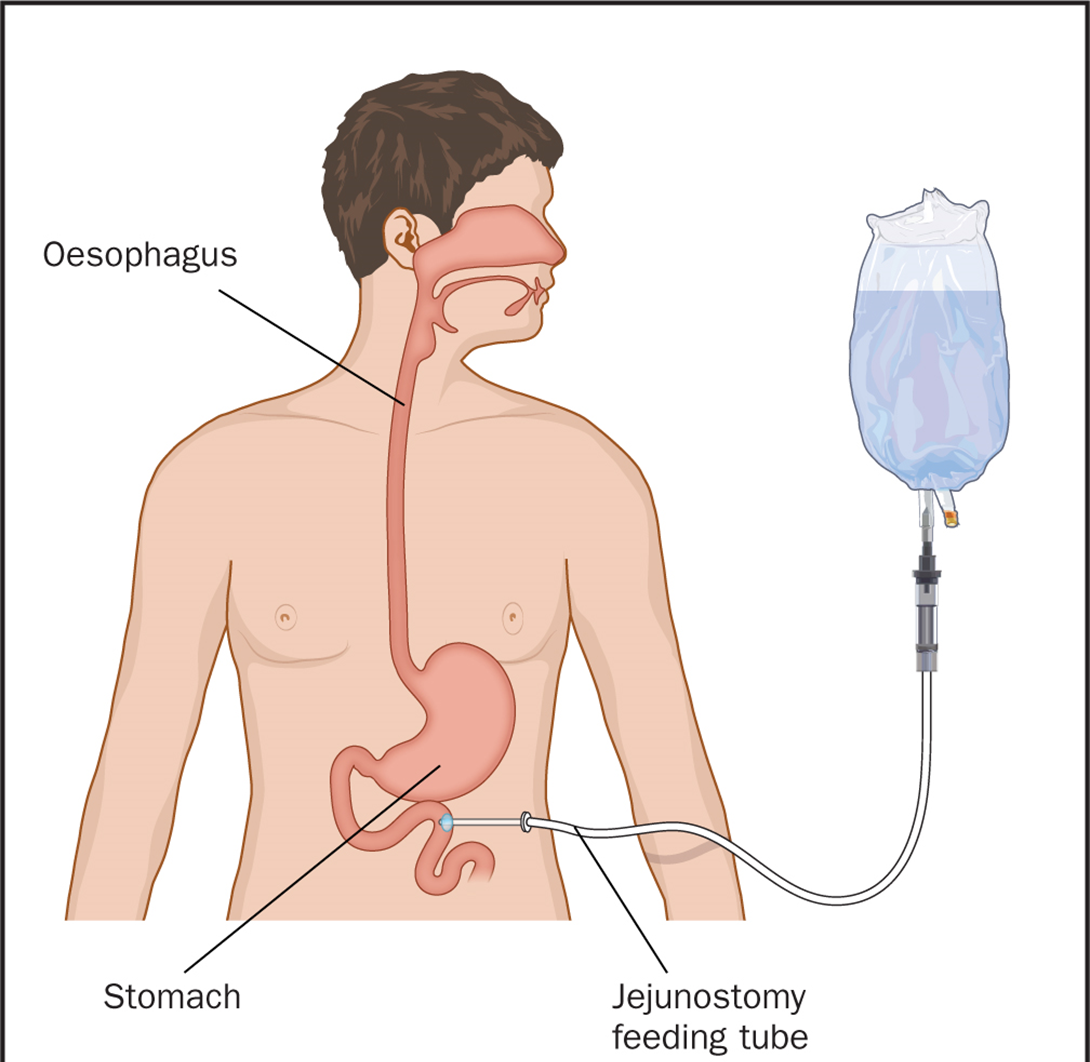A nurse is caring for a client who has a gastrostomy tube and is receiving enteral nutrition. The nurse should identify that which of the following complications represents the greatest risk to the client?
Abdominal distention
Fluid overload
Glycosuria
Tube obstruction
The Correct Answer is D
Choice A reason: Abdominal distention is a possible complication of enteral nutrition, as it may indicate gas accumulation, constipation, or intolerance to the formula. However, it is not the greatest risk to the client, as it can be prevented or managed by adjusting the formula, rate, or volume of the feeding, or by administering medications or enemas.
Choice B reason: Fluid overload is a possible complication of enteral nutrition, as it may indicate excessive fluid intake, renal impairment, or heart failure. However, it is not the greatest risk to the client, as it can be prevented or managed by monitoring the fluid balance, electrolytes, and vital signs, or by administering diuretics or fluid restriction.
Choice C reason: Glycosuria is a possible complication of enteral nutrition, as it may indicate hyperglycemia, diabetes, or infection. However, it is not the greatest risk to the client, as it can be prevented or managed by monitoring the blood glucose, urine output, and signs of infection, or by administering insulin or antibiotics.
Choice D reason: Tube obstruction is the greatest risk to the client, as it may indicate clogging, kinking, or twisting of the tube, which can impair the delivery of the nutrition and medication, and cause aspiration, infection, or perforation. Tube obstruction can be prevented by flushing the tube with water before and after each feeding or medication, and by using a syringe or a pump to administer the formula. Tube obstruction can be managed by using warm water, carbonated beverages, or pancreatic enzymes to unclog the tube, or by replacing the tube if necessary.

Nursing Test Bank
Naxlex Comprehensive Predictor Exams
Related Questions
Correct Answer is D
Explanation
Choice A reason: Increased cholesterol is not an indication that the weight loss program has been effective, as it is a risk factor for cardiovascular disease and stroke. The nurse should expect the client's cholesterol level to decrease as a result of the weight loss program, as it can lower the production and absorption of cholesterol in the body.
Choice B reason: Increased glycosylated hemoglobin (HbA1c) is not an indication that the weight loss program has been effective, as it is a measure of the average blood glucose level over the past 2 to 3 months. The nurse should expect the client's HbA1c level to decrease as a result of the weight loss program, as it can improve the insulin sensitivity and glucose metabolism of the body.
Choice C reason: Increased LDL (low-density lipoprotein) is not an indication that the weight loss program has been effective, as it is the "bad" cholesterol that can accumulate in the arteries and cause atherosclerosis. The nurse should expect the client's LDL level to decrease as a result of the weight loss program, as it can reduce the synthesis and secretion of LDL in the liver.
Choice D reason: Increased HDL (high-density lipoprotein) is an indication that the weight loss program has been effective, as it is the "good" cholesterol that can remove excess cholesterol from the blood and transport it to the liver for excretion. The nurse should expect the client's HDL level to increase as a result of the weight loss program, as it can enhance the activity and expression of HDL in the body.
Correct Answer is C
Explanation
Choice A reason: The standard DASH diet limits sodium intake to 2,300 milligrams per day, which is about the amount of sodium in 1 teaspoon of table salt¹. A lower sodium version of DASH restricts sodium to 1,500 milligrams per day, which may lower blood pressure even further¹. Therefore, limiting sodium intake to 3,200 milligrams per day is not consistent with the DASH diet.
Choice B reason: The DASH diet recommends eating fewer refined carbohydrates and less sugar, as they can increase blood pressure and cholesterol levels². Instead, the DASH diet emphasizes eating more whole grains, fruits, and vegetables, which are rich in fiber, potassium, calcium, and magnesium².
Choice C reason: The DASH diet encourages consuming foods that are high in calcium, such as fat-free or low-fat dairy products, fish, beans, and nuts¹. Calcium is a mineral that helps regulate blood pressure and supports bone health³. Studies have shown that increasing calcium intake can lower blood pressure in people with hypertension³.
Choice D reason: The DASH diet advises limiting foods that are high in saturated fat, such as fatty meats, full-fat dairy products, and tropical oils such as coconut, palm kernel, and palm oils¹. Saturated fat can raise blood pressure and cholesterol levels, which can increase the risk of heart disease and stroke. The DASH diet recommends consuming no more than six percent of total calories from saturated fat¹.
Whether you are a student looking to ace your exams or a practicing nurse seeking to enhance your expertise , our nursing education contents will empower you with the confidence and competence to make a difference in the lives of patients and become a respected leader in the healthcare field.
Visit Naxlex, invest in your future and unlock endless possibilities with our unparalleled nursing education contents today
Report Wrong Answer on the Current Question
Do you disagree with the answer? If yes, what is your expected answer? Explain.
Kindly be descriptive with the issue you are facing.
